R.J. Stowell's Blog: rjsomeone, page 49
February 9, 2019
Help! I'm A Rock - The Mothers of Invention
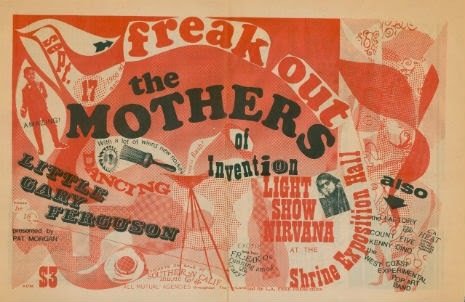 The Doors and The Byrds were Hollywood. As house bands and Strip mainstays, the scene centered on them. One of the bands essential to the L.A. rock scene, and yet not a fixture on the Strip, was The Mothers of Invention. The Mothers got their start instead at Cosmo Alley, one of the most memorable of the Beat era coffee houses. Cosmo Alley was in Hollywood across from the Cinerama Dome and down a back alley near Sunset and Vine. Barbara Dane, a relatively obscure folk and jazz singer, did her tenure there. "It was the epitome of what people imagined a Beat café would be: the waitresses wearing long black tights, long straight hair and lots of eyeliner etc.; lots of poetry and jazz, other experimentation with forms; guys with goatees and berets lurking in dark corners, all of that." The Cosmo, as a coffee house, could stay open later than the bars, so musicians like Ornette Coleman and comedians like Lenny Bruce, hung out after hours. Dane continued, "I got to know Lenny Bruce when he was working in burlesque because he would come in late and after Cosmo Alley was emptied out he'd sit and run his new material by us. Then we'd pass through the back way into an all-night burger joint which had a mynah bird in a cage near the cashier. Lenny persisted in teaching the bird a certain phrase which it finally learned: 'The pope sucks!'"
The Doors and The Byrds were Hollywood. As house bands and Strip mainstays, the scene centered on them. One of the bands essential to the L.A. rock scene, and yet not a fixture on the Strip, was The Mothers of Invention. The Mothers got their start instead at Cosmo Alley, one of the most memorable of the Beat era coffee houses. Cosmo Alley was in Hollywood across from the Cinerama Dome and down a back alley near Sunset and Vine. Barbara Dane, a relatively obscure folk and jazz singer, did her tenure there. "It was the epitome of what people imagined a Beat café would be: the waitresses wearing long black tights, long straight hair and lots of eyeliner etc.; lots of poetry and jazz, other experimentation with forms; guys with goatees and berets lurking in dark corners, all of that." The Cosmo, as a coffee house, could stay open later than the bars, so musicians like Ornette Coleman and comedians like Lenny Bruce, hung out after hours. Dane continued, "I got to know Lenny Bruce when he was working in burlesque because he would come in late and after Cosmo Alley was emptied out he'd sit and run his new material by us. Then we'd pass through the back way into an all-night burger joint which had a mynah bird in a cage near the cashier. Lenny persisted in teaching the bird a certain phrase which it finally learned: 'The pope sucks!'"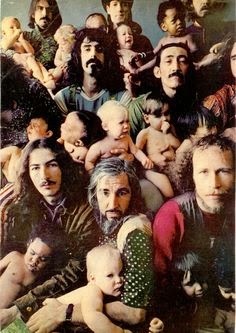 As the era progressed and the Beats were incorporated into the hippie movement, Cosmo Alley, under the management of Herb Cohen (who also managed The Unicorn), began to rely on the teen scene; yet being off the beaten path, artists who played the Cosmo had to have a strong draw. In 1965, Frank Zappa, a would-be film soundtrack composer from Rancho Cucamonga joined rhythm and blues band The Soul Giants. The band was renamed "The Mothers" despite, or because of the inference, and The Mothers started playing in and around L.A. Soon Zappa was the "Freak King" (Freaks were odder, more flamboyant hippie-types, the Oscar Wild(e) hippies, certainly a great draw for the out of the way Cosmo Alley). The Freaks congregated around boho artists Carl Franzoni and Vito Paulekas. "Vito and his Freakers" engaged in open sexual encounters and frequented pop and op art openings and the clubs on the Strip, enlivening each event with their distinctive dancing. According to Sheila Weller in Girls Like Us, "Paulekas and Franzoni trained a young group of 'Freakers' in the sensual body movement that soon became synonymous with mid-1960s dancing. When you walked into Ciro’s in 1965 and heard the music, and saw the stoned dancing, you were jolted by its radical fluidity, gentleness and introspection." In simpler terms, there was a built-in scene for The Mothers.
As the era progressed and the Beats were incorporated into the hippie movement, Cosmo Alley, under the management of Herb Cohen (who also managed The Unicorn), began to rely on the teen scene; yet being off the beaten path, artists who played the Cosmo had to have a strong draw. In 1965, Frank Zappa, a would-be film soundtrack composer from Rancho Cucamonga joined rhythm and blues band The Soul Giants. The band was renamed "The Mothers" despite, or because of the inference, and The Mothers started playing in and around L.A. Soon Zappa was the "Freak King" (Freaks were odder, more flamboyant hippie-types, the Oscar Wild(e) hippies, certainly a great draw for the out of the way Cosmo Alley). The Freaks congregated around boho artists Carl Franzoni and Vito Paulekas. "Vito and his Freakers" engaged in open sexual encounters and frequented pop and op art openings and the clubs on the Strip, enlivening each event with their distinctive dancing. According to Sheila Weller in Girls Like Us, "Paulekas and Franzoni trained a young group of 'Freakers' in the sensual body movement that soon became synonymous with mid-1960s dancing. When you walked into Ciro’s in 1965 and heard the music, and saw the stoned dancing, you were jolted by its radical fluidity, gentleness and introspection." In simpler terms, there was a built-in scene for The Mothers. 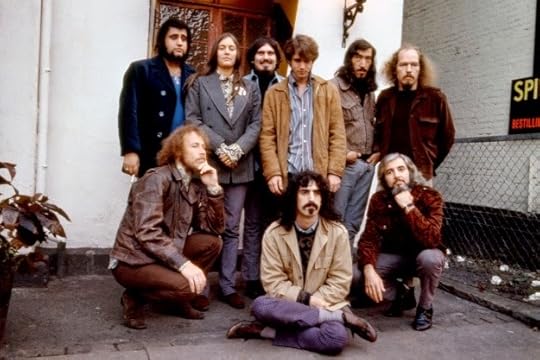
Freak Out! , the 1966 debut album by The Mothers of Invention, was one of the first two-record sets of the rock era (Dylan's Blonde On Blonde beat it by a week). The album wasn't a commercial success, making it only to No. 130 on the Billboard charts, yet it immediately established Frank Zappa in the top rank of rock artists. Freak Out! was produced by legendary African-American record producer Tom Wilson, who also worked with Simon and Garfunkel, The Velvet Underground, Eric Burdon and The Animals and Bob Dylan (Wilson produced three Dylan albums and the “Like a Rolling Stone” single). Wilson signed The Mothers to MGM thinking they were a white blues band, not unlike Big Brother. He'd heard just one song. “Trouble Every Day,” when he saw them at a club on the Sunset Strip and incorrectly assumed the group was something like The Blues Project or MC5. They were anything but. The Mother's inimitable sound was whacked combo of schmaltzy doo-wop, R&B, blues, production gimmicks, free jazz, shifting time signatures, classical music touches and trenchant satirical social observations; indeed, Zappa was rock's ultimate non-conformist.
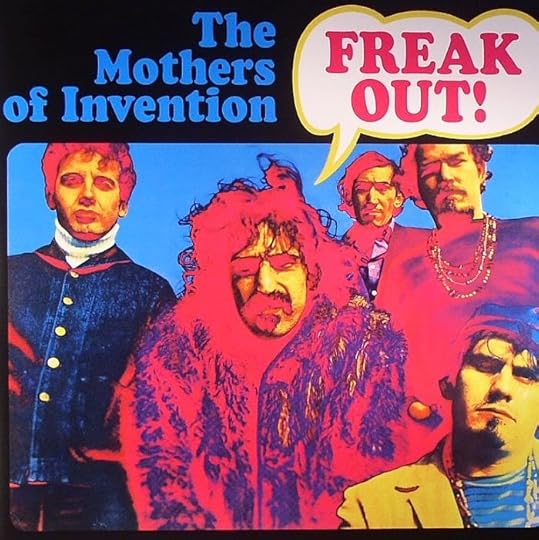 Freak Out! was dropped by MGM in 1970 and left unavailable until Rhino rereleased the set in 1988, leaving the album virtually unknown, even among avid Zappa fans; even among those who would trek out to the midnight theaters in the Valley to watch 200 Motels. Often an album's notoriety and critical acclaim is dictated by availability and marketing; such was the case with Freak Out! and why the album gets no real rubric accolades when it comes to longevity. This will change over time; Freak Out! was revolutionary and evolutionary; we have never danced the same again.
Freak Out! was dropped by MGM in 1970 and left unavailable until Rhino rereleased the set in 1988, leaving the album virtually unknown, even among avid Zappa fans; even among those who would trek out to the midnight theaters in the Valley to watch 200 Motels. Often an album's notoriety and critical acclaim is dictated by availability and marketing; such was the case with Freak Out! and why the album gets no real rubric accolades when it comes to longevity. This will change over time; Freak Out! was revolutionary and evolutionary; we have never danced the same again. According to Suzy Creamcheese of Salt Lake City, Utah: "These Mothers is crazy. You can tell by their clothes. One guy wears beads and they all smell bad. We were gonna get them for a dance after the basketball game but my best pal warned me you can never tell how many will show up…sometimes the guy in the fur coat doesn’t show up and sometimes he does show up only he brings a big bunch of crazy people with him and they dance all over the place. None of the kids at my school like these Mothers…specially since my teacher told us what the words to their songs meant."
When the 2nd Mothers LP was released in 1967, Frank had left L.A. "When it came time for us to do our second album, Absolutely Free, MGM proclaimed that we couldn't spend more than $11,000.00 on it. The recording schedules were ridiculous, making it impossible to perfect anything on the album. It was typical of the kind of bullshit we had to put up with until I got my own studio. Gail and I moved to New York in 1967 to play in the Garrick Theater on Bleecker Street. The first place we stayed, before we could find an apartment, was the Hotel Van Rensselaer on 11th Street. We were living on a small room on one of the upper floors. I was working on the album cover illustration for Absolutely Free at a desk by the window. I remember the place being so dirty I couldn't keep the soot off the artwork."
 Listening to this album is like being locked in a room with a hoard of stand-up comedians - there's no escape. The album takes the form of a couple of wacky narratives or oratarios, as they're described on the sleeve; the first half devoted to vegetables and prunes (which, we are informed, are not vegetables - though pumpkins seem to be). Light on guitar, the LP’s fatal flaw, there is one reprieve in the verbal humor, the instrumental "Invocation and Ritual Dance of the Young Pumpkin". There's some impressive guitar work in this piece that set one on edge for what was yet to come in the Zappa 70s.
Listening to this album is like being locked in a room with a hoard of stand-up comedians - there's no escape. The album takes the form of a couple of wacky narratives or oratarios, as they're described on the sleeve; the first half devoted to vegetables and prunes (which, we are informed, are not vegetables - though pumpkins seem to be). Light on guitar, the LP’s fatal flaw, there is one reprieve in the verbal humor, the instrumental "Invocation and Ritual Dance of the Young Pumpkin". There's some impressive guitar work in this piece that set one on edge for what was yet to come in the Zappa 70s.The second disk is like a Broadway musical, with a mini-musical within. If there's a general theme it escapes me, but there's something about high-school, cream cheese and brown shoes. "Brown Shoes Don't Make It" is the mini-musical within a musical. and plays with numerous musical styles, too many to list, but including crooner, musical, doo wop, blues, 60s R&B, 60s British invasion, jazz, avant garde classical and lounge; the rock base established in Freak Out is sorely missed. The changes between styles often happen at break-neck speed, and the different styles sometimes overlap, all of which adds up to an exhausting listen best enjoyed after a few beers and a J – get through it once and prepare yourself for Joe's Garage. Say what you will, the freak out continues.
Published on February 09, 2019 04:01
January 28, 2019
The Magnificent Moodies
It was fifty years ago that the Moody Blues released the third in a series of six phenomenal concept LPs that began with Days of Future Passed, still the iconic symphonic rock LP. Owning any of the six, particularly if you've never heard anything by the Moodies but "Nights in White Satin," is an experience you can thank me for later; well, thank them for.
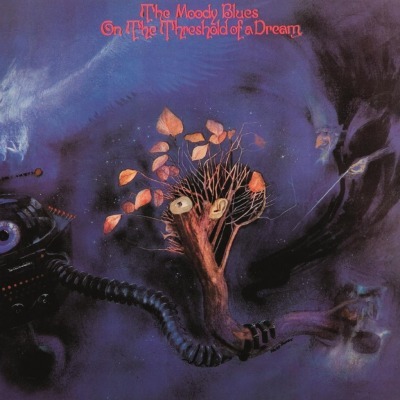 The LP, On the Threshold of a Dream, was among the first wave of album-oriented rock or AOR that would take hold in the 1970s; indeed, On the Threshold of a Dream had no hit songs despite the LP being the first release to enter into the U.S. Top 20 and a No. 1 smash in the U.K.
The LP, On the Threshold of a Dream, was among the first wave of album-oriented rock or AOR that would take hold in the 1970s; indeed, On the Threshold of a Dream had no hit songs despite the LP being the first release to enter into the U.S. Top 20 and a No. 1 smash in the U.K.
In 1965, the Moody Blues had a hit with a remake of "Go Now" that was promo'd by what may be the very first MTV style video, predating even The Beatles' "Rain" and "Paperback Writer." Despite the single's success, the Moodies were struggling financially. Decca Records, hoping to further its exploration into stereophonic recordings, asked the band to do a rock interpretation of Dvorak's New World Symphony (Symphony No. 9) for the new Deram Records label. Instead the band recorded, without the label's knowledge, Days of Future Passed with Mike Pinder's "Dawn is a Feeling" as the catalyst for the project. Justin Heyward would follow with the LP's big hit, "Nights in White Satin," a play on words in which bed sheets are used as a cunning metaphor. Released in 1966, it is still my favorite Moody Blues LP and it introduced the world to symphonic interpretations of rock music.
The band would follow up with In Search of the Lost Chord, a psychedelic concept piece all about the journey. It contained no real hit but gained a lot of radio play with "Ride My See-Saw" and the biopic fantasy "Legend of a Mind," about Dr. Timothy Leary. The song is a part of an extended concept song called "The House of Four Doors," the Moodies at their finest and an incredible soiree into the psychedelic experience.
With the 3rd LP in the concept series, Threshold of a Dream, the Moodies would fully establish themselves as the first AOL rock band. Each of the LPs was meant to be listened to in its entirety; this wasn't background music. The Moody Blues were when listeners first sat on the couch and immersed themselves in the experience. What's interesting though, is that with the next few LPs, the Moodies would have their biggest hits in "Question," "The Story in Your Eyes," "I'm Just a Singer in a Rock 'n' Roll Band" and oddly, six years after its initial release, "Nights in White Satin" would make it all the way to No. 1.
On the Threshold of a Dream is an LP oozing with splash and psychedelic experimentation. The album was a runaway smash in the U.K. and provided The Moody Blues with their first No. 1 British LP, remaining on the charts for some 70 weeks.
 The LP, On the Threshold of a Dream, was among the first wave of album-oriented rock or AOR that would take hold in the 1970s; indeed, On the Threshold of a Dream had no hit songs despite the LP being the first release to enter into the U.S. Top 20 and a No. 1 smash in the U.K.
The LP, On the Threshold of a Dream, was among the first wave of album-oriented rock or AOR that would take hold in the 1970s; indeed, On the Threshold of a Dream had no hit songs despite the LP being the first release to enter into the U.S. Top 20 and a No. 1 smash in the U.K. In 1965, the Moody Blues had a hit with a remake of "Go Now" that was promo'd by what may be the very first MTV style video, predating even The Beatles' "Rain" and "Paperback Writer." Despite the single's success, the Moodies were struggling financially. Decca Records, hoping to further its exploration into stereophonic recordings, asked the band to do a rock interpretation of Dvorak's New World Symphony (Symphony No. 9) for the new Deram Records label. Instead the band recorded, without the label's knowledge, Days of Future Passed with Mike Pinder's "Dawn is a Feeling" as the catalyst for the project. Justin Heyward would follow with the LP's big hit, "Nights in White Satin," a play on words in which bed sheets are used as a cunning metaphor. Released in 1966, it is still my favorite Moody Blues LP and it introduced the world to symphonic interpretations of rock music.
The band would follow up with In Search of the Lost Chord, a psychedelic concept piece all about the journey. It contained no real hit but gained a lot of radio play with "Ride My See-Saw" and the biopic fantasy "Legend of a Mind," about Dr. Timothy Leary. The song is a part of an extended concept song called "The House of Four Doors," the Moodies at their finest and an incredible soiree into the psychedelic experience.
With the 3rd LP in the concept series, Threshold of a Dream, the Moodies would fully establish themselves as the first AOL rock band. Each of the LPs was meant to be listened to in its entirety; this wasn't background music. The Moody Blues were when listeners first sat on the couch and immersed themselves in the experience. What's interesting though, is that with the next few LPs, the Moodies would have their biggest hits in "Question," "The Story in Your Eyes," "I'm Just a Singer in a Rock 'n' Roll Band" and oddly, six years after its initial release, "Nights in White Satin" would make it all the way to No. 1.
On the Threshold of a Dream is an LP oozing with splash and psychedelic experimentation. The album was a runaway smash in the U.K. and provided The Moody Blues with their first No. 1 British LP, remaining on the charts for some 70 weeks.
Published on January 28, 2019 03:48
January 26, 2019
The Moody Blues
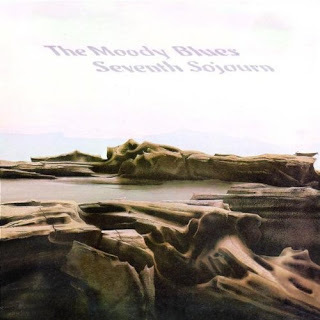 You flip through the vinyl at your fave record shop and come across The Zombies. You know the songs, "Tell Her No," "She's Not There" and "Time of the Season," among the best singles the 60s have to offer, but you've never heard the misspelled LP called Oddessey and Oracle. Turns out to be one of the stellar albums of 1968, and you pick it up for a couple bucks because no one's ever heard of it. Like S.F. Sorrow, another dismissed tour de force, you figure it's a score and now you're privy to what others are not. Someday you'll happen upon Blue Cheer's Vincebus Eruptus or you'll find Badger's debut, a live LP, and buy it simply because of the incredible Roger Dean cover. So, it's dumb luck, but how can a band whose first seven LPs (discounting the fledgling debut), be so readily dismissed? Of course I'm referring to The Moody Blues. No doubt, die hard fans still flock to Red Rocks, but when we read of the greatest LPs of all time, the Moodys are mostly forgotten. Our little website can't fix that, but we can acknowledge a ten year stint that embraced pop and psychedelia like a boss. What follows may seem but a boring list. It's my justification for the elevation of The Moodys as one of the greatest bands in the rock canon, purveyors of the concept and the catalyst of art rock.
You flip through the vinyl at your fave record shop and come across The Zombies. You know the songs, "Tell Her No," "She's Not There" and "Time of the Season," among the best singles the 60s have to offer, but you've never heard the misspelled LP called Oddessey and Oracle. Turns out to be one of the stellar albums of 1968, and you pick it up for a couple bucks because no one's ever heard of it. Like S.F. Sorrow, another dismissed tour de force, you figure it's a score and now you're privy to what others are not. Someday you'll happen upon Blue Cheer's Vincebus Eruptus or you'll find Badger's debut, a live LP, and buy it simply because of the incredible Roger Dean cover. So, it's dumb luck, but how can a band whose first seven LPs (discounting the fledgling debut), be so readily dismissed? Of course I'm referring to The Moody Blues. No doubt, die hard fans still flock to Red Rocks, but when we read of the greatest LPs of all time, the Moodys are mostly forgotten. Our little website can't fix that, but we can acknowledge a ten year stint that embraced pop and psychedelia like a boss. What follows may seem but a boring list. It's my justification for the elevation of The Moodys as one of the greatest bands in the rock canon, purveyors of the concept and the catalyst of art rock.May 4, 1964: The Moody Blues, consisting of Denny Laine (lead vocals, guitar), who would go on to play guitar for Wings, Ray Thomas (vocals, tambourine, flute), Mike Pinder (vocals, mellotron, piano), Clint Warwick (vocals, bass guitar), and Graeme Edge (vocals, drums), form in Birmingham.
Spring, 1964: The single "Steal Your Heart Away/Lose Your Money(But Don't Lose Your Mind)" is released to commercial failure in the UK. The Moody Blues appeared on the UK TV series Ready, Steady, Go to promote the B side.
October, 1964: The Moody Blues record their debut The Magnificent Moodies at Decca Studios in West Hampstead, London.
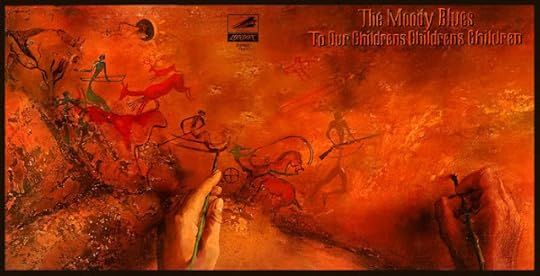
October 30, 1964: The Moody Blues perform at the Crawdaddy Club in London, England.
November, 1964: The single "Go Now," is released to critical and commercial success. The single peaked at No. 1 on the UK Singles Chart, and at No. 10 on the Billboard Hot 100 in the US.
July 22, 1965: The Magnificent Moodies, is released to regional, critical and commercial success. The album peaked at No. 5 in the UK, but failed to chart in the US.
October, 1966: Rod Clark departs from the Moody Blues. Denny Laine departs as well.
November, 1966: After a brief hiatus, The Moody Blues re-form, with John Lodge replacing Rod Clark on Bass Guitar and Justin Hayward replacing Denny Laine on lead vocals and guitar. Here then is where it gets good. For the next year, the Moodys face a lack of success that would have split the average band, but…October 8, 1967: The Moody Blues go into Decca Studios in West Hampstead, London, England, to record their second album, the concept album Days of Future Passed. Initially conceived as a merging of classical music and rock, the LP was meant as a stylized version of Antonín Dvořák's Symphony No. 9, also known as the New World Symphony. Of their own volition and despite Decca's new label, Deram, dismissing the idea,the concept LP was born (many will point to Pet Sounds and In the Wee Small Hours of the Morning, but that's splitting hairs) The concept of this album, a day in the life of everyman, features the London Festival Orchestra.
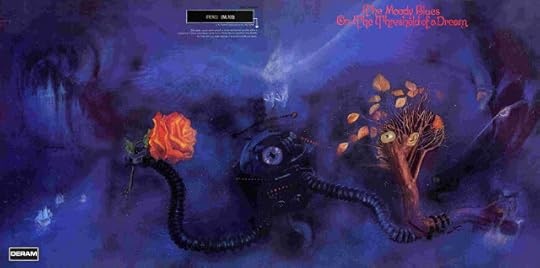
November 11, 1967: Days of Future Passed, featuring the songs "Tuesday Afternoon," and "Nights in White Satin," is released to critical and commercial success. The album peaked at No. 27 on the UK Albums Chart and No. 3 on the Billboard 200 in the US. "Tuesday Afternoon" peaked at No. 24 on the Billboard Hot 100, while failing to chart in the UK, and "Nights in White Satin" rose to No. 9 on the UK Singles Chart and No. 2 on the Billboard Hot 100 in the US, respectively.
January, 1968: The Moody Blues record In Search of the Lost Chord at Decca Studios in West Hampstead, London. The concepts of the LP are quest and discovery.
July 26, 1968: In Search of the Lost Chord, featuring the single "Ride My See-Saw," and cult fave "Legend of a Mind," is released to critical and commercial success.
November 8, 1968: The Moody Blues perform at the Electric Factory in Philadelphia, Pennsylvania.
November 24, 1968: The Moody Blues perform at the Fillmore West in San Francisco, California.

January 12, 1969: The band head back to Decca Studios to record their fourth album, the concept LP On the Threshold of a Dream. The concept, duh, is dreams.
April 25, 1969: On the Threshold of a Dream peaks at No. 5 on the UK Albums Chart and No. 23 on the Billboard 200 in the US.
May, 1969: Just three months later, The Moody Blues record their fifth album, yes, indeed, a concept LP, To Our Children's Children's Children.
October, 1969: The single "Watching and Waiting" is released to commercial failure, selling about ten copies (half of which were purchased by the Moody Blues themselves).
November 21, 1969: To Our Children’s Children’s Children is released to critical and commercial success. The album peaked at No. 2 on the UK Albums Chart and No. 14 in America.
January 17, 1970: The band record their sixth album, A Question of Balance.
April, 1970: The single "Question" is released to critical and commercial success. The single peaked at No. 2 in the UK and No. 21 on the Billboard Hot 100.
August 7, 1970: A Question of Balance is released to critical and commercial success. The album is their most successful, reaching No. 1 in the UK and No. 3 in the US.
November, 1970: The Moodys head to Wessex Studios in London to record their seventh album, Every Good Boy Deserves Favour.
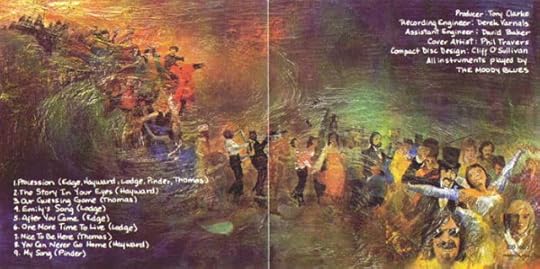
July 23, 1971: Every Good Boy Deserves Favour, featuring the songs "Procession" and "The Story in Your Eyes,"is released to critical and commercial success. The album rose to No. 1 on the UK Albums Chart and No. 2 on the Billboard 200 in the US. "The Story in Your Eyes" reached No. 23 on the Billboard Hot 100.
January, 1972: The Moody Blues go into Decca, Tollington Park Studios, London to record their eighth album, Seventh Sojurn.
April, 1972: The single "Isn’t Life Strange" is released to critical and commercial success.
November 17, 1972: Seventh Sojurn is released to critical and commercial success. The album makes No. 5 on the UK Albums Chart and No. 1 on the Billboard charts.
Published on January 26, 2019 10:04
January 25, 2019
The Rolling Stones' Rock and Roll Circus - 50 Years Ago
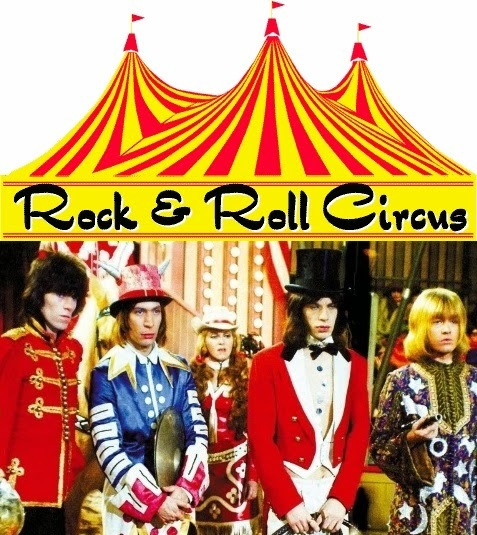 Along the lines of Magical Mystery Tour, The Rolling Stones' Rock and Roll Circus was an obscure December 1968 sideshow that featured clowns, tigers, fire-eaters, the Rolling Stones and a menagerie of musicians like The Who, Eric Clapton and John Lennon. Unhappy with their performance, The Stones shelved the project and cancelled its premiere on the BBC. A clip of The Who performing "A Quick One While He's Away" made it into The Kids Are Alright, but the rest stayed on the shelf until 1996.
Along the lines of Magical Mystery Tour, The Rolling Stones' Rock and Roll Circus was an obscure December 1968 sideshow that featured clowns, tigers, fire-eaters, the Rolling Stones and a menagerie of musicians like The Who, Eric Clapton and John Lennon. Unhappy with their performance, The Stones shelved the project and cancelled its premiere on the BBC. A clip of The Who performing "A Quick One While He's Away" made it into The Kids Are Alright, but the rest stayed on the shelf until 1996. The Stones put together the circus after releasing Beggar's Banquet and finding themselves on top with a smash single in "Jumpin’ Jack Flash," and a top 10 album on three continents. Ringmaster/producer Mick Jagger recruited his sideshow friends along with Marianne Faithfull, Taj Mahal and the then-unknown Jethro Tull (having only released their first album, This Was, six weeks prior). Twenty hours of filming resulted in a production that alternated between vaudevillian spectacle and offbeat rock and roll. Especially noteworthy is a blistering version of the Beatles' "Yer Blues" by the Dirty Mac, a supergroup featuring John Lennon on rhythm guitar and vocals, Eric Clapton on lead, Keith Richards on bass and Mitch Mitchell (of The Jimi Hendrix Experience) on drums. The Stones went on at 1am, performing a set that included several songs from Beggar's Banquet and the as-yet unreleased "You Can’t Always Get What You Want." It is, despite the self-deprecation, a stellar performance building to a hypnotic "Sympathy For The Devil" and a rousing sing-along of "Salt Of The Earth," featuring all the side show freaks.
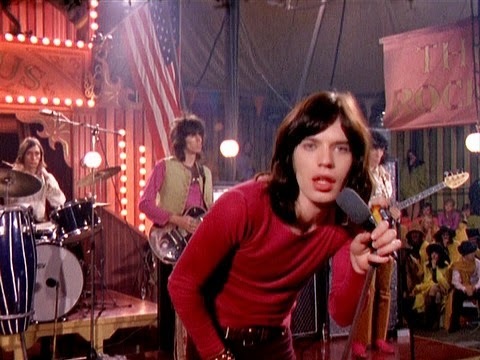 The Rock 'n Roll Circus was the first major performance of Jethro Tull, featuring their first and last gig with guitarist Tony Iommi, who left just weeks later to form Black Sabbath; it was one of the first times The Who performed a rock opera live (and nailed it); it featured one of the first rock supergroups, The Dirty Mac (a play on Fleetwood Mac) and Lennon's first concert performance without the Beatles. As well, it was the last time the original Rolling Stones performed live, and sadly, the last gig for Brian Jones, who was found face down in a swimming pool but a month later. The special had its origins when Jagger, seeking an innovative way to promote Beggars Banquet, teamed with director Michael Lindsay-Hogg (Brideshead Revisited, Let It Be) to create a television concert with a circus theme filmed in front of an audience of invited guests. The broadcast begins with all the performers entering at once, followed by Jagger dressed as a ringmaster and offering an invocation to the viewers. At times a bit tortured and contrite, The Rolling Stones' Rock 'n' Roll Circus is a must watch (once) and a great listen weeded down to a playlist.
The Rock 'n Roll Circus was the first major performance of Jethro Tull, featuring their first and last gig with guitarist Tony Iommi, who left just weeks later to form Black Sabbath; it was one of the first times The Who performed a rock opera live (and nailed it); it featured one of the first rock supergroups, The Dirty Mac (a play on Fleetwood Mac) and Lennon's first concert performance without the Beatles. As well, it was the last time the original Rolling Stones performed live, and sadly, the last gig for Brian Jones, who was found face down in a swimming pool but a month later. The special had its origins when Jagger, seeking an innovative way to promote Beggars Banquet, teamed with director Michael Lindsay-Hogg (Brideshead Revisited, Let It Be) to create a television concert with a circus theme filmed in front of an audience of invited guests. The broadcast begins with all the performers entering at once, followed by Jagger dressed as a ringmaster and offering an invocation to the viewers. At times a bit tortured and contrite, The Rolling Stones' Rock 'n' Roll Circus is a must watch (once) and a great listen weeded down to a playlist.
Published on January 25, 2019 17:13
January 22, 2019
Zeppelin V. Cream
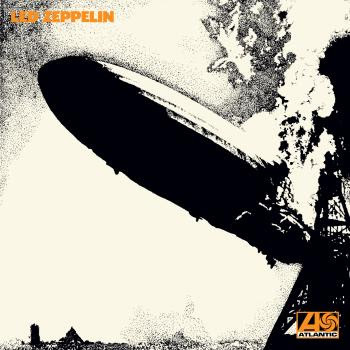 On January 12th, 1969, Led Zeppelin released their eponymous debut album. Spearheaded by Jimmy Page, Keith Moon said the band would "go down like a lead balloon."
On January 12th, 1969, Led Zeppelin released their eponymous debut album. Spearheaded by Jimmy Page, Keith Moon said the band would "go down like a lead balloon." Led Zeppelin did not succumb to their predicted fate. Instead, they became rock music pioneers. Led Zeppelin was unlike anything of its time, cultivating a blues-rock sound with a crisp heaviness. Perhaps it was the combination of Page's swift blues guitar playing in conjunction with the unusual and bluesy falsetto of Robert Plant. (Interestingly, Page's style was the antithesis of fellow Yardbird, Eric Clapton, who was nicknamed "Slow Hand.") The new sound, the first real 70s band, was rounded out with the insanely brilliant drumming of John Bonham and the stellar musicianship of John Paul Jones.
50 years later, Led Zeppelin's debut withstands the test of time. From the opening chords of "Good Times Bad Times" to the closing notes of the blues saga "How Many More Times," there isn't a single dull moment on the album. Song genres bounce from hard rock to deep blues to folky; three eclectic styles the band would embrace throughout their career. Transitions like "Black Mountain Side," a steel-string acoustic guitar ballad, into "Communication Breakdown," a fast-paced rocker, showcase the band's extraordinary talent.
No discussion of Led Zeppelin is complete without a mention of "Dazed and Confused." With its slow, descending bass-line, the song lingers in the mysterious before punching its way into hard rock legend. Add in a guitar solo played with a violin bow, and you have yourself an instant classic.
Keep in mind, though, that Led Zeppelin is far from a 10 on the AM scale. The LP is a mixed bag, a bit too quirky at times and flawed on a myriad of levels – doesn't matter. With little exception, this is the LP that transformed the 60s into the 70s. Rock 'n' roll transitioned into rock when Keith Richards laid down the opening riff for "Satisfaction" in 1965. Led Zeppelin was the next real turning point. There are better LPs from the era, dozens of them, but none are more influential.
And no, by the way, it's not amnesia. There is little doubt that the genre was more essentially created by Eric Clapton, Jack Bruce and Ginger Baker with the power trio Cream. It was Cream who fused rock, blues and jazz in a very heavy and unheard of way beginning in 1966 and made a host of other contemporary musicians take notice. Cream fought with Atlantic Records early on because their style was not yet bankable but gradually convinced the bigwigs that a song like "Sunshine of Your Love" could win over the musical public. Cream was the seed, but today remain sadly unnoticed and underrated. With that in mind, Led Zeppelin is far more influential than Disraeli Gears (a far better LP).
The bottom line is, there was a tight knit ensemble of friends and colleagues who created a sound that Led Zeppelin brought to the forefront. Here's the recap: Eric Clapton was only 18 when he joined the Yardbirds in 1963, just after the group took over for the up-and-coming Rolling Stones as the house band at London's Crawdaddy Club. Like many English musicians of his generation, Clapton was primarily interested in American blues, and quit the Yardbirds when they drifted from blues toward experimental pop with their 1965 hit "For Your Love," an AM10). Clapton recommended as his replacement his friend Jimmy Page, then an enormously successful session musician, but Page declined. That led to the Yardbirds hiring Jeff Beck, who would serve as the group’s lead guitarist during its most successful and influential period. In 1966, when Paul Samwell-Smith quit the band, Jimmy Page finally agreed to join the group, initially playing bass and then teaming with Beck in a twin-guitar attack before Beck left later in the year. The transformation from Yardbirds to the New Yardbirds would take place in its many iterations during the course of 1968 and in December of that year, Led Zeppelin was born.
Published on January 22, 2019 03:48
January 18, 2019
Pleasant Valley Sunday
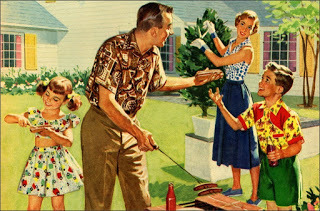 The American suburbs of the 1960s were the classic aspirational destination. People moved to the suburbs for their slice of the good life – a little house with a quiet yard, near a good school. The suburbs represented the American ideals of homeownership, education, low crime and autonomy. They represented insulation from the perceived ills of urban living. After World War II, veterans received federally backed low-cost mortgages, and the interstate highway network opened acres of land to new housing, chief among them the San Fernando Valley in Southern California. For me, Panorama City, smack dab in the middle of the Valley, was at the apex of global power and consumer abundance; it was what Americans expected from their country, their cars, their consumer goods and their economy.
The American suburbs of the 1960s were the classic aspirational destination. People moved to the suburbs for their slice of the good life – a little house with a quiet yard, near a good school. The suburbs represented the American ideals of homeownership, education, low crime and autonomy. They represented insulation from the perceived ills of urban living. After World War II, veterans received federally backed low-cost mortgages, and the interstate highway network opened acres of land to new housing, chief among them the San Fernando Valley in Southern California. For me, Panorama City, smack dab in the middle of the Valley, was at the apex of global power and consumer abundance; it was what Americans expected from their country, their cars, their consumer goods and their economy.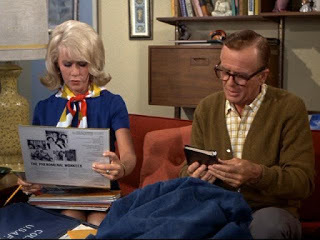 For me, living in a suburban Medallion all electric home with a lanai in an all white neighborhood from out of a Dick and Jane primer, was the American Dream. I was too young to know that the dream was crumbling. Funny that it was the Monkees who tore at that dream with their reality. "Pleasant Valley Sunday" by Gerry Goffin and Carol King was an ode to a simple life veiled in realities that only began to show their ugly faces with the assassination of JFK. Ignorance was bliss. Ironically the song wasn’t about sunny California at all, but about a street in West Orange, NJ, still the sardonic lyrics were apropos for white flight neighborhoods across the nation. "Pleasant Valley Sunday" was probably the Monkees' finest moment. They actually played the majority of instruments on the track, with Mike harmonizing to Mickey's lead vocals and carrying the opening guitar riff. The final fade is a cacophonous mess that tied the theme, the ironic lyrics and the music together. The tune ranks up there with The Blob and No Down Payment – and Mad Men – in its ability to convey the last of white America, and a scathing indictment of consumerism and materialism.
For me, living in a suburban Medallion all electric home with a lanai in an all white neighborhood from out of a Dick and Jane primer, was the American Dream. I was too young to know that the dream was crumbling. Funny that it was the Monkees who tore at that dream with their reality. "Pleasant Valley Sunday" by Gerry Goffin and Carol King was an ode to a simple life veiled in realities that only began to show their ugly faces with the assassination of JFK. Ignorance was bliss. Ironically the song wasn’t about sunny California at all, but about a street in West Orange, NJ, still the sardonic lyrics were apropos for white flight neighborhoods across the nation. "Pleasant Valley Sunday" was probably the Monkees' finest moment. They actually played the majority of instruments on the track, with Mike harmonizing to Mickey's lead vocals and carrying the opening guitar riff. The final fade is a cacophonous mess that tied the theme, the ironic lyrics and the music together. The tune ranks up there with The Blob and No Down Payment – and Mad Men – in its ability to convey the last of white America, and a scathing indictment of consumerism and materialism.Or maybe it was just good Monkee fun.
Your local rock group down the streetIs trying hard to learn this songTo serenade the weekend squireJust came out to mow his lawnAnother Pleasant Valley SundayCharcoal burnin' everywhereRows of houses that are all the sameAnd no one seems to care
See Mrs. Gray she's proud todayBecause her roses are in bloomAnd Mr. Green he's so sereneHe's got a TV in every roomAnother Pleasant Valley SundayHere in status symbol landMothers complain about how hard life isAnd the kids just don't understand
Creature comfort goals they only numb my soulAnd make it hard for me to seeMy thoughts all seem to stray to places far awayI need a change of sceneryAnother Pleasant Valley SundayCharcoal burning everywhereAnother Pleasant Valley SundayHere in status symbol landAnother Pleasant Valley Sunday
Published on January 18, 2019 09:20
January 14, 2019
The Monkees
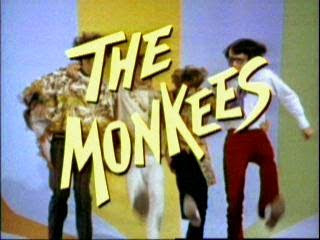 Psychedelic-rock was a bonanza for Hollywood producers because it provided a vehicle to indulge themselves in a myriad of bizarre arrangements. Producer Ed Cobb, for instance, contributed to psychedelic-rock via an artificial combo, San Jose's the Chocolate Watchband, who are credited with Cobb's "The Inner Mystique." In all practicality, the band didn't even exist, though what Cobb created made them seem like The Moody Blues.
Psychedelic-rock was a bonanza for Hollywood producers because it provided a vehicle to indulge themselves in a myriad of bizarre arrangements. Producer Ed Cobb, for instance, contributed to psychedelic-rock via an artificial combo, San Jose's the Chocolate Watchband, who are credited with Cobb's "The Inner Mystique." In all practicality, the band didn't even exist, though what Cobb created made them seem like The Moody Blues. Similarly, David Axelrod penned the "Mass In F Minor" by The Electric Prunes, the first "rock mass." The Electric Prunes do not even appear on the album (the rights to the name "The Electric Prunes" having been signed over to Axelrod). Despite the ideology of the bands behind the music, it was still, a corporate game.
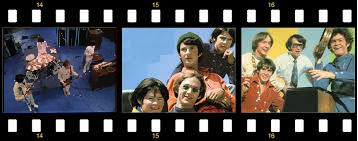
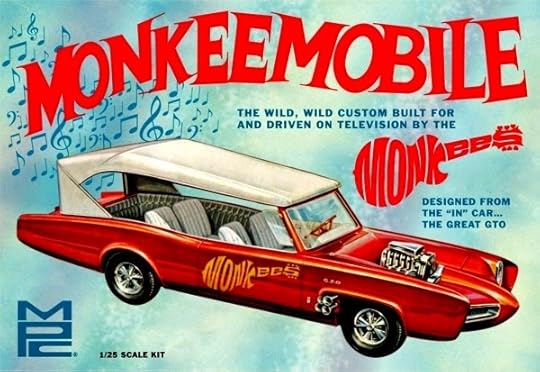 Who Could Forget?Nonetheless, in the mid 60s, TV producers Bob Rafelson and Bert Schneider brought together two actors and two musicians to play a fictional bunch of well-groomed teens who share a house, form a band and hang out. The show was a smash hit, indeed The Monkees outsold The Beatles and The Stones in 1966 (it took Sgt. Pepper in 1967 to knock The Monkees out of the top spot). The Monkees first two albums had at their disposal the best Hollywood studio musicians, and songwriters like Neil Diamond, Carole King, Gerry Goffin and David Gates, not to mention Mike Nesmith (whose "Different Drum" sparked the career of Linda Ronstadt). By Headquarters, the band was producing, playing a myriad of instruments, writing many of the best songs and essentially doing what standards singers had done for the thirty years prior to the 60s without criticism. Despite The Monkees' artifice, they remain an integral part of the psychedelic music scene, and based on the Colgems TV production, each of the band's hits was filmed in a psychedelic setting, making The Monkees one of the key entrants into music video. It was about the music, and The Monkees, though not The Beatles, though manufactured and contrived, managed to produce hits like "Pleasant Valley Sunday," "Daydream Believer" and the ephemeral "Porpoise Song" (from Head).
Who Could Forget?Nonetheless, in the mid 60s, TV producers Bob Rafelson and Bert Schneider brought together two actors and two musicians to play a fictional bunch of well-groomed teens who share a house, form a band and hang out. The show was a smash hit, indeed The Monkees outsold The Beatles and The Stones in 1966 (it took Sgt. Pepper in 1967 to knock The Monkees out of the top spot). The Monkees first two albums had at their disposal the best Hollywood studio musicians, and songwriters like Neil Diamond, Carole King, Gerry Goffin and David Gates, not to mention Mike Nesmith (whose "Different Drum" sparked the career of Linda Ronstadt). By Headquarters, the band was producing, playing a myriad of instruments, writing many of the best songs and essentially doing what standards singers had done for the thirty years prior to the 60s without criticism. Despite The Monkees' artifice, they remain an integral part of the psychedelic music scene, and based on the Colgems TV production, each of the band's hits was filmed in a psychedelic setting, making The Monkees one of the key entrants into music video. It was about the music, and The Monkees, though not The Beatles, though manufactured and contrived, managed to produce hits like "Pleasant Valley Sunday," "Daydream Believer" and the ephemeral "Porpoise Song" (from Head).The Monkees’ 2nd LP, More of the Monkees was a massive hit, though the band had no control over the release of the LP, objecting to the chosen tracks and the rush to market. As a corporate construct, nobody was listening. The TV show was a huge success, inching the Beverly Hillbillies out of the top TV spot, and on the strength of "I'm a Believer," released in November 1966 and selling upwards of two million copies, More of the Monkees rocketed to the top slot. Still The Monkees were labelled as talentless musicians portrayed by actors who had auditioned for their roles, and there was no arguing the point. Because of it, Don Kirshner and Colgems had complete artistic control. Until Headquarters.
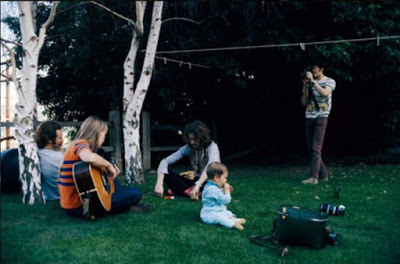 David Crosby, Joni Mitchell, Eric Clapton, Owen Elliot, Mickey DolenzBased on the success of the 2nd LP and on "I'm a Believer," The Monkees were the biggest selling band in the world. Mike Nesmith, the most talented of the four, strenuously argued on behalf of the group, hoping to gain their independence from the corporate stanglehold, at one point putting his fist through a wall in Kirshner's office. "That," he told Kirshner, "could have been your face."
David Crosby, Joni Mitchell, Eric Clapton, Owen Elliot, Mickey DolenzBased on the success of the 2nd LP and on "I'm a Believer," The Monkees were the biggest selling band in the world. Mike Nesmith, the most talented of the four, strenuously argued on behalf of the group, hoping to gain their independence from the corporate stanglehold, at one point putting his fist through a wall in Kirshner's office. "That," he told Kirshner, "could have been your face."Ultimately, being the biggest band in the world does indeed have some clout, Kirshner was fired and the lunatics took over the asylum – which, in this case, was a wonderful thing. Headquarters, the resulting album, not only stands as one of the crowning jewels in the Monkees' catalog, but also as one of the finest albums of 1967. Did I say that? It's not just me. Keep in mind that Headquarters was an LP that nearly kept Sgt. Pepper out of the top slot in June 1967, having held the crown since its release in May, without the aid of a "hit." Headquarters is true garage rock, pre-psychedelia with tinges of pop and a bit of country, with nearly every note played by guitarist Nesmith, drummer Micky Dolenz, multi-instrumentalist Peter Tork and "percussionist" Davy Jones (Next to Ray Cooper, Elton John's 70's percussionist, Davy Jones is the best tambourine player around! I say that with a straight face, and Jones really is a decent percussionist, but keep in mind that we're talking tambourine here, you know, Tracy from The Partridge Family). The exception was bass, which played by Chip Douglas, who also produced the album. The songs were primarily by Nesmith, Dolenz and Tork, with two by Tommy Boyce and Bobby Hart, and one by Brill Building legends Barry Mann and Cynthia Weil. Songs like "You Told Me," "You Just May Be the One" and "Sunny Girlfriend" showed Nesmith’s songwriting prowess. "For Pete’s Sake," written by Tork, became the closing theme music for the second season of the TV show, and Dolenz' "Randy Scouse Git" managed to name-check Andy Warhol, the Beatles and counterculture in general in one fell swoop. The song was a hit in the U.K., though the title was changed to "Alternate Title" as a jab at the U.K. label, which demanded it be swapped out since, in British slang, the title translated roughtly to "horny Liverpudlian bastard."
Headquarters was indeed toppled by the Sgt. In June of 1967, but it would toe the line as the planet's penultimate LP well into August. Obviously, as hardly a grade-schooler in ’67, I have a fondness for the LP based more on the fact that I'd discovered it on my own – it was not a hand-me-down from my older brother – but Headquarters, a solid 6 and approaching a 7 on the AM rubric, is an often overlooked gem of an LP. I call the Monkees' Headquarters their Rubber Soul.
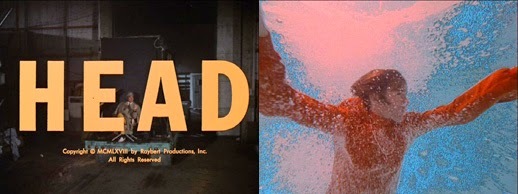
The Monkees over the top success with the 3rd LP gave them free-reign to do whatever they chose. What was next, the fourth-wall-shattering, stream-of-consciousness black comedy Head, which mocks war, America, Hollywood, television, the music business and the Monkees themselves, is one of the weirdest and most intriguing rock movies ever made. Quentin Tarantino and Edgar Wright are both dedicated fans. DJ Shadow and Saint Etienne have sampled its dialogue. According to director Bob Rafelson, the Beatles and the Rolling Stones both requested private screenings, while Thomas Pynchon attended a showing disguised as a plumber. (You can't make this up.)
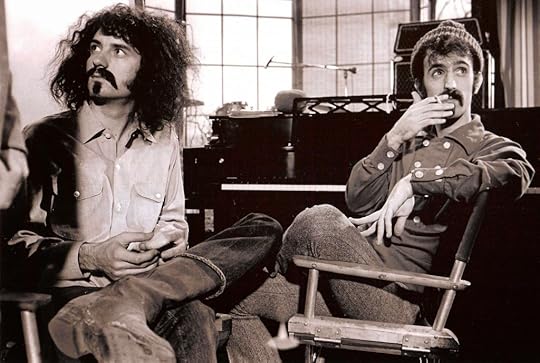 Mike as Frank Zappa; Zappa as MikeBut to the fans who had made the Monkees household names, it might as well never have existed. "The movie dropped like a ball of dark star," said bassist Peter Tork. "The simile of a rock in the water is too mild for how badly that movie did." Though they had produced the previous three albums, Headquarters; The Birds, The Bees and The Monkees; and Pieces, Aquarius, Capricorn and Jones, The Monkees had little artistic control over Head, that task went to producer/writer Bob Rafelson and Jack Nicholson. Over the years the film has become a cult and critical success with a soundtrack that contains music disappointing to teeny-bopper Monkee-fans, but may be among The Monkees' best work, with songs by Carole King and Harry Nilsson, and contributions by Frank Zappa, Leon Russell, Ry Cooder and Stephen Stills.
Mike as Frank Zappa; Zappa as MikeBut to the fans who had made the Monkees household names, it might as well never have existed. "The movie dropped like a ball of dark star," said bassist Peter Tork. "The simile of a rock in the water is too mild for how badly that movie did." Though they had produced the previous three albums, Headquarters; The Birds, The Bees and The Monkees; and Pieces, Aquarius, Capricorn and Jones, The Monkees had little artistic control over Head, that task went to producer/writer Bob Rafelson and Jack Nicholson. Over the years the film has become a cult and critical success with a soundtrack that contains music disappointing to teeny-bopper Monkee-fans, but may be among The Monkees' best work, with songs by Carole King and Harry Nilsson, and contributions by Frank Zappa, Leon Russell, Ry Cooder and Stephen Stills. Strip off the label and disguise the voices a bit and Head could be passed off as a Frank Zappa LP, with a touch of Captain Beefheart. Growing up, it was Headquarters that cemented this writer's relationship with the Pre-Fab Four, the LP that was the proof there was talent amongst the bunch (get it, a banana joke). While The Monkees would shine with two more LPs before their failed attempt at motion pictures, Head retrospectively shines as a psychedelic treat, if forbiddingly inaccessible.
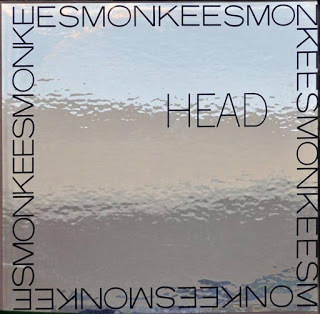 With A Hard Days Night, The Beatles created meta-rock in their self-awareness that Beatlemania was surreal. The Monkees with Head capitalized on the idea by reimagining the self-parodying theme music: "Hey, hey, we are The Monkees,/ You know we love to please a manufactured image with no philosophies" ("Ditty Diego – War Chant"). There are essentially six "songs" on the album. "Porpoise Song (Theme From Head)," sung by Mickey Dolenz and Davy Jones with backing vocals by Leon Russell, and arrangement by Jack Nitzche. "Porpoise Song" was written by Gerry Goffin and Carole King, as many Monkee classics were. Then there's Michael Nesmith's "Circle Sky," which accentuates how Nesmith was developing into the writer who would influence music – particularly country music – as much as more "legitimate" artists like Gram Parsons. Then there's Peter Tork's "Can You Dig It" (sung by Micky) with Buffalo Springfield's Dewy Martin on drums, another great Carole King song, "As We Go Along," co-written by Toni Stern, with Neil Young and Ry Cooder picking up the harmonies. Then there's Davy Jones's cover of Nilsson's "Daddy’s Song." The album concludes with "Swami Plus Strings Etc" which includes a reprise of "Porpoise Song" and strings arranged by Ken Thorne.
With A Hard Days Night, The Beatles created meta-rock in their self-awareness that Beatlemania was surreal. The Monkees with Head capitalized on the idea by reimagining the self-parodying theme music: "Hey, hey, we are The Monkees,/ You know we love to please a manufactured image with no philosophies" ("Ditty Diego – War Chant"). There are essentially six "songs" on the album. "Porpoise Song (Theme From Head)," sung by Mickey Dolenz and Davy Jones with backing vocals by Leon Russell, and arrangement by Jack Nitzche. "Porpoise Song" was written by Gerry Goffin and Carole King, as many Monkee classics were. Then there's Michael Nesmith's "Circle Sky," which accentuates how Nesmith was developing into the writer who would influence music – particularly country music – as much as more "legitimate" artists like Gram Parsons. Then there's Peter Tork's "Can You Dig It" (sung by Micky) with Buffalo Springfield's Dewy Martin on drums, another great Carole King song, "As We Go Along," co-written by Toni Stern, with Neil Young and Ry Cooder picking up the harmonies. Then there's Davy Jones's cover of Nilsson's "Daddy’s Song." The album concludes with "Swami Plus Strings Etc" which includes a reprise of "Porpoise Song" and strings arranged by Ken Thorne. In an album pool beyond reproach, Head may not be one of the finest LPs of 1968, but remains highly underrated and a glimpse into what came out of the naked party house. Retrospectively, The Monkees and Head, pretty f-ing amazing.
Published on January 14, 2019 03:55
January 12, 2019
Rock Cinema - Head
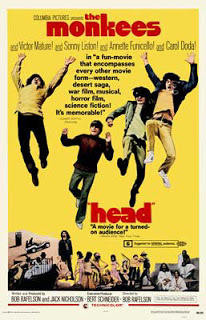 The genesis of Head, the only theatrical production by The Monkees, was a lost weekend in 1968 when The Monkees, Bob Rafelson and B-movie actor Jack Nicholson, turned on a tape recorder and took turns tossing ideas about. The ill-fated film got off on the wrong foot from the first day of filming on February 11, 1968, including a rock-bottom budget of $750,000.
The genesis of Head, the only theatrical production by The Monkees, was a lost weekend in 1968 when The Monkees, Bob Rafelson and B-movie actor Jack Nicholson, turned on a tape recorder and took turns tossing ideas about. The ill-fated film got off on the wrong foot from the first day of filming on February 11, 1968, including a rock-bottom budget of $750,000.The cast was hellishly eclectic and included Annette Funicello, boxer Sonny Liston, Frank Zappa, a teen-aged Terri Garr and the Radio City Rockettes. Veteran actor Victor Mature signed on after reading the script: "All I know is, it made me laugh." Mature's character in Head was "the Big Victor," a jab at RCA Victor, the distributor for Colgems which owned and aired the TV show. Even Jack Nicholson and Dennis Hopper made brief cameos.
The film had no opening credits but opens with what could be considered an early music video, the Goffin-King penned "Porpoise Song." The film quickly morphs from there into what many describe as something resembling an "acid trip;" the basic premise of which was the Monkees unmaking their clean-cut TV images. In one scene, the Monkees walk into the studio commissary and a cattle stampede rushes out. In real life, many performers disliked The Monkees and would deliberately walk out of the studio commissary when the boys entered.
 In many scenes, only three Monkees appear on screen, a reference to "see no evil, hear no evil, speak no evil." A few Beatles references are thrown in, as well. In one scene, Ringo Starr is mentioned. In another, Peter Tork whistles "Strawberry Fields Forever" as he walks into the restroom. Even some of the end credits of Head boggle the mind, which were printed backward as the "reversed" cast, i.e. Srebmahc Yrret as Oreh (Terry Chambers as Hero) and Revaew Adnil as Yraterces Revol (Linda Weaver as Lover Secretary).
In many scenes, only three Monkees appear on screen, a reference to "see no evil, hear no evil, speak no evil." A few Beatles references are thrown in, as well. In one scene, Ringo Starr is mentioned. In another, Peter Tork whistles "Strawberry Fields Forever" as he walks into the restroom. Even some of the end credits of Head boggle the mind, which were printed backward as the "reversed" cast, i.e. Srebmahc Yrret as Oreh (Terry Chambers as Hero) and Revaew Adnil as Yraterces Revol (Linda Weaver as Lover Secretary).  Toward the end of production, Jack Nicholson was at the studio where he encountered Mike Nesmith working on the Head soundtrack. Jack asked if he could help, and to his surprise, Nesmith turned the whole thing over to Nicholson, saying "I just want to go home." Production wrapped on May 21, 1968, and a disastrous preview took place in Los Angeles, causing the filmmakers to cut the one hour 50-minute film to just 86 minutes.
Toward the end of production, Jack Nicholson was at the studio where he encountered Mike Nesmith working on the Head soundtrack. Jack asked if he could help, and to his surprise, Nesmith turned the whole thing over to Nicholson, saying "I just want to go home." Production wrapped on May 21, 1968, and a disastrous preview took place in Los Angeles, causing the filmmakers to cut the one hour 50-minute film to just 86 minutes. The World Premiere occurred Wednesday, November 6, 1968 in Manhattan; a gala was held at Columbia Pictures Studio on West 54th Street attended by The Monkees, Janis Ian, Andy Warhol, Boyce and Hart, Carole Bayer, Bert Schneider, Bob Rafelson and Peter Fonda. An invitation-only debut of Head in Los Angeles took place at 8:30pm, Tuesday, November 19, 1968 at The Vogue Theater on Hollywood Blvd., attended by The Monkees, Phyllis Nesmith, Samantha Juste, Cass Elliot and Denny Doherty of The Mamas And The Papas, Boyce and Hart, Dennis Hopper, actor Sonny Tufts, comedy troupe The Committee, Tina Louise, and supporting Head cast members Frank Zappa, Sonny Liston and Annette Funicello. The film was a tremendous box office flop by most standards until it's below budget costs are calculated into the mix.
While A Hard Day's Night hovers within the 100 best films ever made, Head doesn't begin to capture the latent talents of the studio-created boy band, yet retrospectively the film has gained a deserved cult following, is immensely watchable in bits and pieces and caps a Monkee career lauded by everyone from Rivers Cuomo to Billy Corgan, from Piers Morgan to Ringo Starr.
Published on January 12, 2019 18:15
January 8, 2019
The Kinks in the Chain - The American Ban - 1965-1969
The Kinks hailed from Muswill Hill in north London and centered on the Davies brothers, Ray and Dave. With Ray's school friend Pete Quaife, they were in various bands together starting in 1961 until forming The Kinks in early 1964. The line-up was completed with the addition of drummer Mick Avory. Initially an R&B/blues outfit, they steadily evolved from their early garage/punk days to become one of the quintessentially English rock bands of 1960s. Along the way, The Kink's story is filled with fights, blown opportunities and a bizarre ban from performing in the USA from 1965-1969.
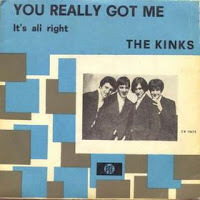 Things went well on the Kinks' first American tour in the summer of 1965, some things, anyway: the band discovered the pleasures of pizza, malted milkshakes, and buxom groupies. Still the foursome was in turmoil. Earlier that year, guitarist Dave Davies and drummer Mick Avory had a fight onstage in Wales, which started with Davies spitting at Avory and ended with Avory hitting Davies over the head with the pedal to his high-hat cymbal. On any given night, the band’s management wasn’t sure how the Kinks would behave: whether they would do a full show, come to blows, or treat the audience to a 45-minute version of "You Really Got Me," as the band's road manager portends. Ray Davies was reported to say that if the only song the audience knew was "You Really Got Me," that was all they were going to play.
Things went well on the Kinks' first American tour in the summer of 1965, some things, anyway: the band discovered the pleasures of pizza, malted milkshakes, and buxom groupies. Still the foursome was in turmoil. Earlier that year, guitarist Dave Davies and drummer Mick Avory had a fight onstage in Wales, which started with Davies spitting at Avory and ended with Avory hitting Davies over the head with the pedal to his high-hat cymbal. On any given night, the band’s management wasn’t sure how the Kinks would behave: whether they would do a full show, come to blows, or treat the audience to a 45-minute version of "You Really Got Me," as the band's road manager portends. Ray Davies was reported to say that if the only song the audience knew was "You Really Got Me," that was all they were going to play.
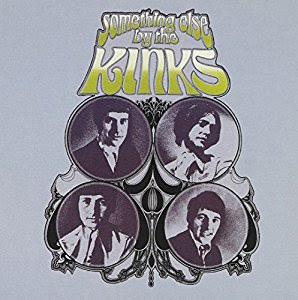 Although singer Ray Davies has called tales of the Kinks' American misbehavior "character assassination; a plot to destroy us," sources close to the band confirm that they found trouble wherever they went, at least some of it of their own making. The band skipped a show in Sacramento, Ray Davies punched a union official who kept insinuating that England was already as good as Communist, and they appeared on a Dick Clark special for NBC without paying their mandatory dues to the American Federation of Television and Recording Artists. Years later, Ray Davies mused, "In many respects, that ridiculous ban took away the best years of the Kinks' career when the original band was performing at its peak." He went on to say, "The reason we got banned was a mixture of bad agency, bad management, bad luck, and bad behavior.... So we deserved everything we got. But it got lifted four years later. We literally signed a confession — it was a confessional. We didn't even read it."
Although singer Ray Davies has called tales of the Kinks' American misbehavior "character assassination; a plot to destroy us," sources close to the band confirm that they found trouble wherever they went, at least some of it of their own making. The band skipped a show in Sacramento, Ray Davies punched a union official who kept insinuating that England was already as good as Communist, and they appeared on a Dick Clark special for NBC without paying their mandatory dues to the American Federation of Television and Recording Artists. Years later, Ray Davies mused, "In many respects, that ridiculous ban took away the best years of the Kinks' career when the original band was performing at its peak." He went on to say, "The reason we got banned was a mixture of bad agency, bad management, bad luck, and bad behavior.... So we deserved everything we got. But it got lifted four years later. We literally signed a confession — it was a confessional. We didn't even read it."
From a commercial standpoint, the ban was horrific, cutting the band off from touring when they were at their commercial peak. From an artistic standpoint, though, it may have been the best thing to ever happen to them. It forced Ray Davies to mature, become more introspective and observational (not to mention sober).
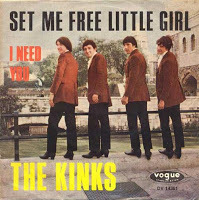 By 1966 and early 1967, however, the musical climate was shifting and bands like the Beatles, The Who, and The Rolling Stones were leading the way from singles-oriented music to AOR. This was manifested most notably with the Beatles' 1965 album Rubber Soul and its 1966 follow-up, Revolver, before they all but disenfranchised singles-based marketing with 1967's Sgt. Pepper's Lonely Hearts Club Band. The Who did the same with 1967's The Who Sell Out and the Stones followed suit with 1966's Aftermath. It wasn’t that these songs didn’t translate into hits; more that the general quality of the album format had propelled songwriting to its finest moments since the days of the American Standard. The Kinks did the same beginning with their 1966 album Face to Face and with that album, began a run of greatness and staggering quality that included one of this writer’s favorite singles, “Set Me Free, Little Girl.” In 1967 they would release Something Else which included more sophisticated singles like "David Watts" (later covered by The Jam) and "Waterloo Sunset," a pastoral piece a la Percy Bysshe Shelley.
By 1966 and early 1967, however, the musical climate was shifting and bands like the Beatles, The Who, and The Rolling Stones were leading the way from singles-oriented music to AOR. This was manifested most notably with the Beatles' 1965 album Rubber Soul and its 1966 follow-up, Revolver, before they all but disenfranchised singles-based marketing with 1967's Sgt. Pepper's Lonely Hearts Club Band. The Who did the same with 1967's The Who Sell Out and the Stones followed suit with 1966's Aftermath. It wasn’t that these songs didn’t translate into hits; more that the general quality of the album format had propelled songwriting to its finest moments since the days of the American Standard. The Kinks did the same beginning with their 1966 album Face to Face and with that album, began a run of greatness and staggering quality that included one of this writer’s favorite singles, “Set Me Free, Little Girl.” In 1967 they would release Something Else which included more sophisticated singles like "David Watts" (later covered by The Jam) and "Waterloo Sunset," a pastoral piece a la Percy Bysshe Shelley.
Though The Kinks would go on to gain fame and acceptance in America in the 70s, particularly with a resurgence in play of the phenomenal and iconic “You Really Got Me,” a huge chuck of the 60s eludes their presence in America.
 Things went well on the Kinks' first American tour in the summer of 1965, some things, anyway: the band discovered the pleasures of pizza, malted milkshakes, and buxom groupies. Still the foursome was in turmoil. Earlier that year, guitarist Dave Davies and drummer Mick Avory had a fight onstage in Wales, which started with Davies spitting at Avory and ended with Avory hitting Davies over the head with the pedal to his high-hat cymbal. On any given night, the band’s management wasn’t sure how the Kinks would behave: whether they would do a full show, come to blows, or treat the audience to a 45-minute version of "You Really Got Me," as the band's road manager portends. Ray Davies was reported to say that if the only song the audience knew was "You Really Got Me," that was all they were going to play.
Things went well on the Kinks' first American tour in the summer of 1965, some things, anyway: the band discovered the pleasures of pizza, malted milkshakes, and buxom groupies. Still the foursome was in turmoil. Earlier that year, guitarist Dave Davies and drummer Mick Avory had a fight onstage in Wales, which started with Davies spitting at Avory and ended with Avory hitting Davies over the head with the pedal to his high-hat cymbal. On any given night, the band’s management wasn’t sure how the Kinks would behave: whether they would do a full show, come to blows, or treat the audience to a 45-minute version of "You Really Got Me," as the band's road manager portends. Ray Davies was reported to say that if the only song the audience knew was "You Really Got Me," that was all they were going to play. Although singer Ray Davies has called tales of the Kinks' American misbehavior "character assassination; a plot to destroy us," sources close to the band confirm that they found trouble wherever they went, at least some of it of their own making. The band skipped a show in Sacramento, Ray Davies punched a union official who kept insinuating that England was already as good as Communist, and they appeared on a Dick Clark special for NBC without paying their mandatory dues to the American Federation of Television and Recording Artists. Years later, Ray Davies mused, "In many respects, that ridiculous ban took away the best years of the Kinks' career when the original band was performing at its peak." He went on to say, "The reason we got banned was a mixture of bad agency, bad management, bad luck, and bad behavior.... So we deserved everything we got. But it got lifted four years later. We literally signed a confession — it was a confessional. We didn't even read it."
Although singer Ray Davies has called tales of the Kinks' American misbehavior "character assassination; a plot to destroy us," sources close to the band confirm that they found trouble wherever they went, at least some of it of their own making. The band skipped a show in Sacramento, Ray Davies punched a union official who kept insinuating that England was already as good as Communist, and they appeared on a Dick Clark special for NBC without paying their mandatory dues to the American Federation of Television and Recording Artists. Years later, Ray Davies mused, "In many respects, that ridiculous ban took away the best years of the Kinks' career when the original band was performing at its peak." He went on to say, "The reason we got banned was a mixture of bad agency, bad management, bad luck, and bad behavior.... So we deserved everything we got. But it got lifted four years later. We literally signed a confession — it was a confessional. We didn't even read it."From a commercial standpoint, the ban was horrific, cutting the band off from touring when they were at their commercial peak. From an artistic standpoint, though, it may have been the best thing to ever happen to them. It forced Ray Davies to mature, become more introspective and observational (not to mention sober).
 By 1966 and early 1967, however, the musical climate was shifting and bands like the Beatles, The Who, and The Rolling Stones were leading the way from singles-oriented music to AOR. This was manifested most notably with the Beatles' 1965 album Rubber Soul and its 1966 follow-up, Revolver, before they all but disenfranchised singles-based marketing with 1967's Sgt. Pepper's Lonely Hearts Club Band. The Who did the same with 1967's The Who Sell Out and the Stones followed suit with 1966's Aftermath. It wasn’t that these songs didn’t translate into hits; more that the general quality of the album format had propelled songwriting to its finest moments since the days of the American Standard. The Kinks did the same beginning with their 1966 album Face to Face and with that album, began a run of greatness and staggering quality that included one of this writer’s favorite singles, “Set Me Free, Little Girl.” In 1967 they would release Something Else which included more sophisticated singles like "David Watts" (later covered by The Jam) and "Waterloo Sunset," a pastoral piece a la Percy Bysshe Shelley.
By 1966 and early 1967, however, the musical climate was shifting and bands like the Beatles, The Who, and The Rolling Stones were leading the way from singles-oriented music to AOR. This was manifested most notably with the Beatles' 1965 album Rubber Soul and its 1966 follow-up, Revolver, before they all but disenfranchised singles-based marketing with 1967's Sgt. Pepper's Lonely Hearts Club Band. The Who did the same with 1967's The Who Sell Out and the Stones followed suit with 1966's Aftermath. It wasn’t that these songs didn’t translate into hits; more that the general quality of the album format had propelled songwriting to its finest moments since the days of the American Standard. The Kinks did the same beginning with their 1966 album Face to Face and with that album, began a run of greatness and staggering quality that included one of this writer’s favorite singles, “Set Me Free, Little Girl.” In 1967 they would release Something Else which included more sophisticated singles like "David Watts" (later covered by The Jam) and "Waterloo Sunset," a pastoral piece a la Percy Bysshe Shelley.Though The Kinks would go on to gain fame and acceptance in America in the 70s, particularly with a resurgence in play of the phenomenal and iconic “You Really Got Me,” a huge chuck of the 60s eludes their presence in America.
Published on January 08, 2019 18:49
January 4, 2019
More on Led Zeppelin (One)
 While still at art school, Jimmy Page turned down the opportunity to replace Eric Clapton in the Yardbirds, snubbing the offer in favor of session work and recommending Jeff Beck in his place. Page realized that despite the Yardbird's success, he could make more money working as a studio musician and subsequently sold his wares to bands as diverse as Them and Herman's Hermits, The Who and Joe Cocker. It was at this point in the 20-year-old's career that he saw Burt Bacharach step into a Rolls Royce and realized how much money there was to be made without the relentless schedule of a rock band.
While still at art school, Jimmy Page turned down the opportunity to replace Eric Clapton in the Yardbirds, snubbing the offer in favor of session work and recommending Jeff Beck in his place. Page realized that despite the Yardbird's success, he could make more money working as a studio musician and subsequently sold his wares to bands as diverse as Them and Herman's Hermits, The Who and Joe Cocker. It was at this point in the 20-year-old's career that he saw Burt Bacharach step into a Rolls Royce and realized how much money there was to be made without the relentless schedule of a rock band. In the summer of '66, Page hooked up with Beck, Keith Moon (drums), Nicky Hopkins (keyboards) and bass session player John Paul Jones. It was at that impromptu jam that Keith Moon hinted that the band would go over like a "led balloon." The session was the catalyst for Jimmy temporarily joining Beck in the Yardbirds, but Beck abruptly left the band during the American leg of their tour. "It [we] could have been even better than the Stones," Jimmy said, had Beck not been "his own worst enemy."
When The Yardbirds finally fell apart, Page was determined to keep the show on the road – even if it meant replacing everyone in the band, which he did, recruiting John Paul Jones, on bass and keyboards, and adding two newbies, 19-year-old vocalist Robert Plant and John Bonham. The band played a few sessions as The New Yardbirds and then changed their name to Led Zeppelin. It was December 1968.
Twelve days after the tour and the group's return to the U.K., Page took his new band to Olympic Studios, a popular eight-track venue in Barnes, South London – the same studio the Stones had recently recorded Beggars Banquet. Nine days later, after a total of just 30 hours in the studio, the album was recorded, mixed and mastered. Total cost, including artwork: £1,782, about $2500. (In comparison, Brian Wilson's production of "Good Vibrations" took some 90 hours over a seven month period at a cost of between $50,000 and $75,000.)
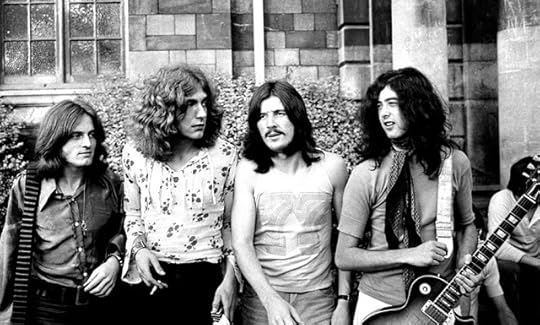
The LP contains only three original compositions, but let's again toss away any controversy with the cold hard fact that blues music, even the electric blues that Zeppelin hoped to capture, was a genre of copycats; borrowing from the work of others was a blues tradition. Here, for instance, is the evolution of "Black Mountain Side," an acoustic guitar instrumental in the exotic, modal style of Page's earlier Yardbirds-era showcase, "White Summer." Where "White Summer" had been Page's interpretation of Davy Graham's "She Moved Through the Fair," which, in turn, was Graham's interpretation of "She Moved Through The Bizarre," "Black Mountain Side" was Page's instrumental take on Bert Jansch's 1966 recording of a traditional Gaelic folk tune titled "Black Water." The reality is, Jansch's version pales in comparison to Page's, and that is the end of that story. Not original to Page. Not original to Jansch. Phenomenal interpretations by both.
Call it what you will, the eponymous Led Zeppelin remains the ultimate electric blues LP and rather than controversy, music lovers should be relishing in its incredible accomplishment in an era when hard rock began and ended with The Who, who just weren't very hard.
Published on January 04, 2019 05:14



